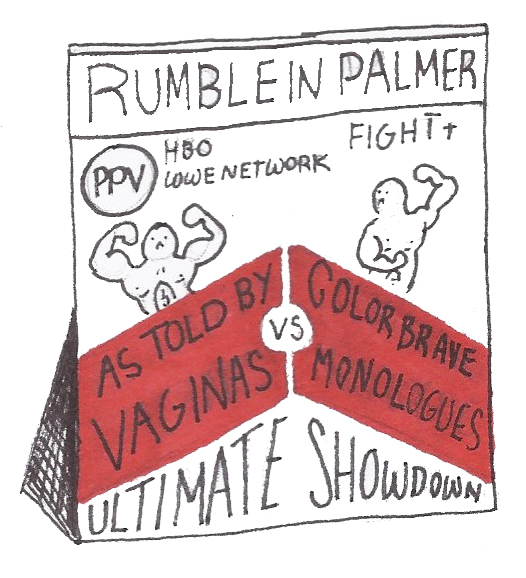Lamiya Khandaker ’17 is on a mission. As Chair for Diversity and Equity in SGA, alongside the Diversity Committee of SGA, she is spearheading the Color Brave Monologues. I caught up with her to learn more about the effort. Khandaker came up with the idea of the Color Brave Monologues through chatting last semester with Carolyn Denard, former Dean of the College. She states that the aim of the Monologues “is to acknowledge our intersectional identities, our race, our ethnicity, our sex and gender, our socioeconomic class, and whatever else we feel labels us. The idea of Color-Brave is to show that our identities have a long history, and we shouldn’t be blind to them, we need to appreciate them for how they’ve impacted each of our lives.” Further, she hopes that by representing the real life stories of people on campus, the Monologues can go beyond the limitations of previous efforts, “something that is just spoken about in a little one-hour event, where many students don’t actually share their actual thoughts in the fear of saying the wrong thing.” One of these limitations was that the conversation centered on helping those already privileged on campus and in society to acknowledge their privilege.
I see the Monologues as culminating from the events involving faculty, staff, community members and students in the wake of Ferguson. Issues brought up by some of the faculty at the event that I attended had to do with the discomfort that conversations about inequity, identity and oppression caused for the interlocutors in it. It is precisely because the Monologues will address uncomfortable topics and engage in uncomfortable conversations that they seem to be a good follow up to sustain the dialogue generated at the beginning of the academic year. As Khandaker herself states, “The conversation of diversity on this campus has always been a tricky one. It was always aimed to cater to certain groups, and for the purposes “to teach” about a diversity issue. It’s about time we had something that catered to us with voices, narratives and stories to share.” The Monologues will be uncomfortable. It addresses controversial issues which may get sidelined.
What I see as a big selling point of the Monologues is that students can submit anonymously, and in doing so, openly confront their ideas and feelings on complex issues of identity and difference. Another question that had been posed during the event I attended post-Ferguson wondered at how to further build on the energy surrounding these issues. Public memory is short and some wondered if the furor would just die away with people and students living their humdrum lives. In this regard, the Color Brave Monologues have the potential to be successful in making some progress toward sustaining the conversation.
Some may consider the Color Brave Monologues to be delegitimized by the vetting process (which may end up suppressing some voices) and its connections with the administration. However, Khandaker says that the Monologues are entirely student led and anyone interested can assist in the editing and final presentation of the Monologues. She is also aiming to make the Diversity Committee more active in its role this year, veering away from some of its more traditional efforts such as the Diversity Summit, and thus reimagining them. To concerns that the Monologues is not as organic as an open mic event, Wesley Chrabasz ’17, also on the Diversity Committee, replies that “the format of the Monologues is already finalized. We want to edit the performances for grammar, but still keep them “raw” so to speak. We hope to be choosing the best monologues to submit, but anyone can submit a monologue, and chances are that any that are submitted will be performed. In that sense, it is sort of an open mic, but we’re also rehearsing. So it’s more organized.”
I like the structure and aim of the entire effort at the Color Brave Monologues. It shows promise as a beginning to deal with important issues. The success of the effort however remains to be seen. It will depend on how actively students take an interest in the initiative. I am interested to see the final product. •









